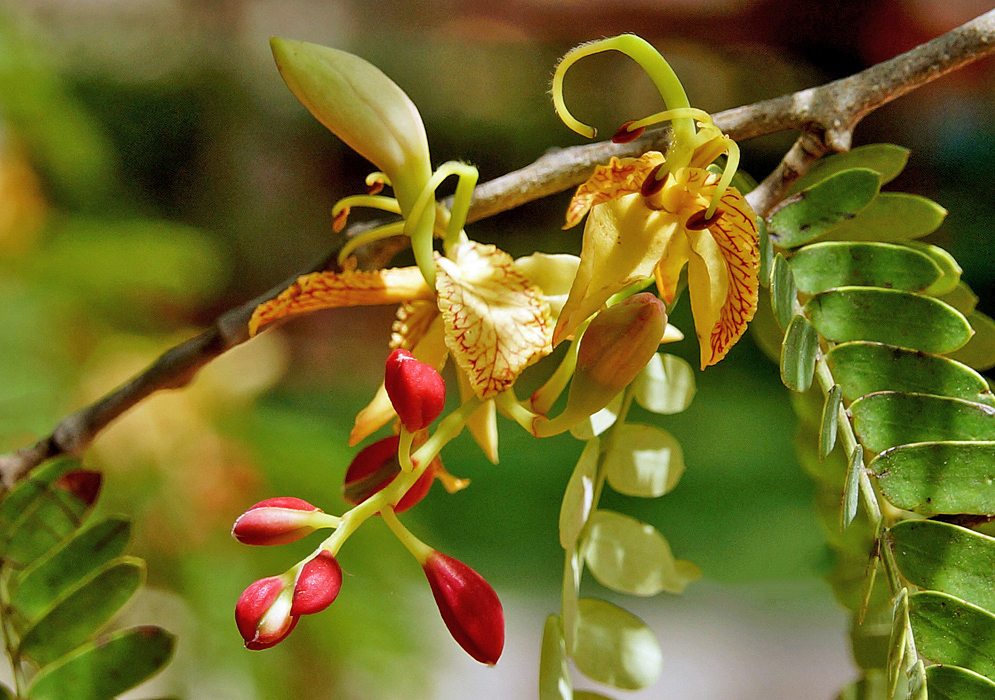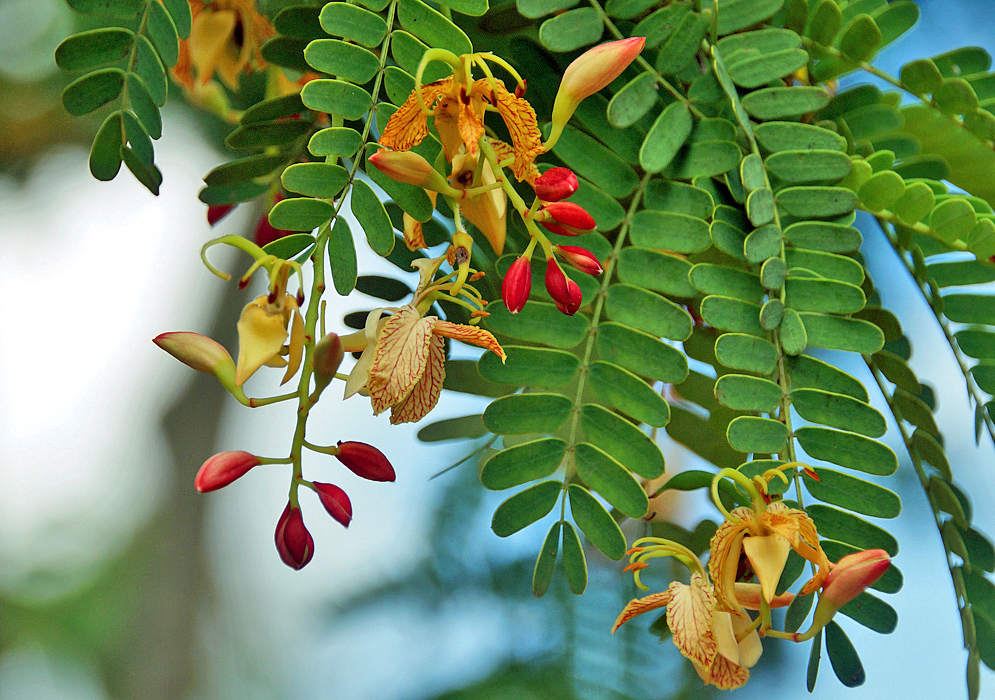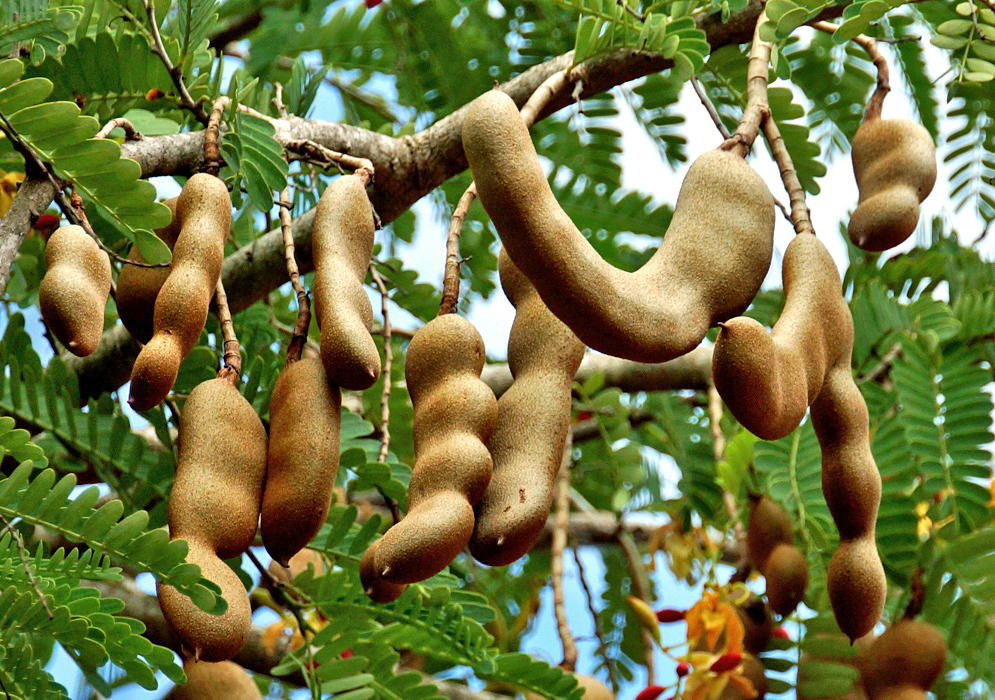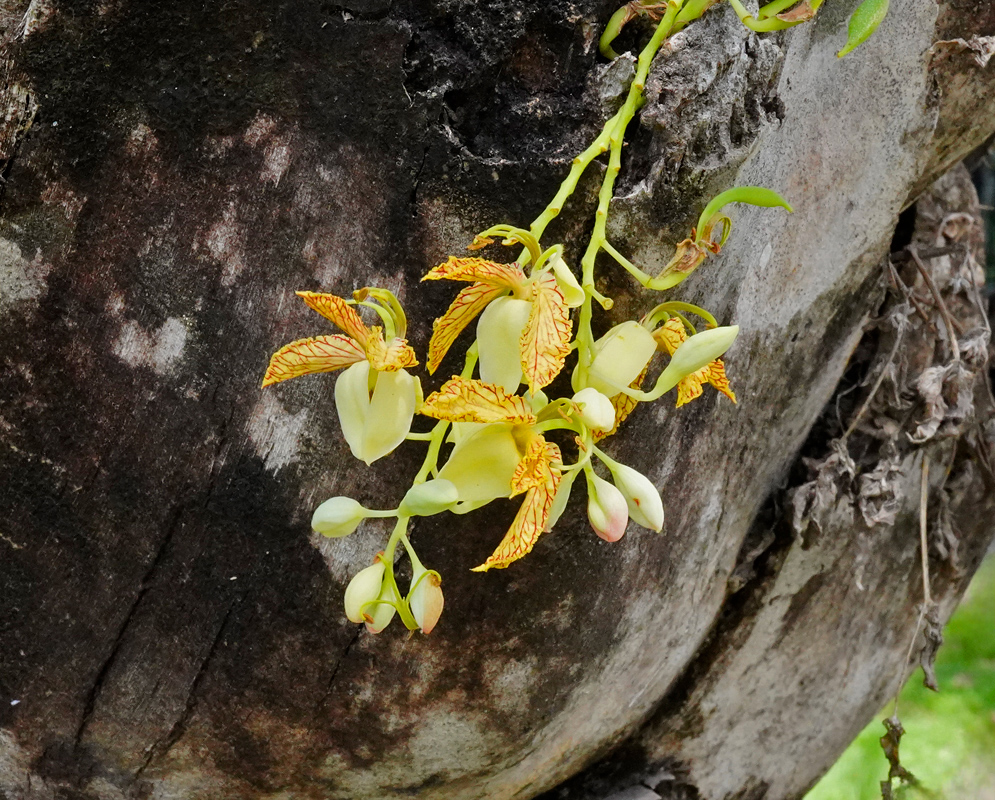This post has 11 Simple Fields-fields attached. Show fields.
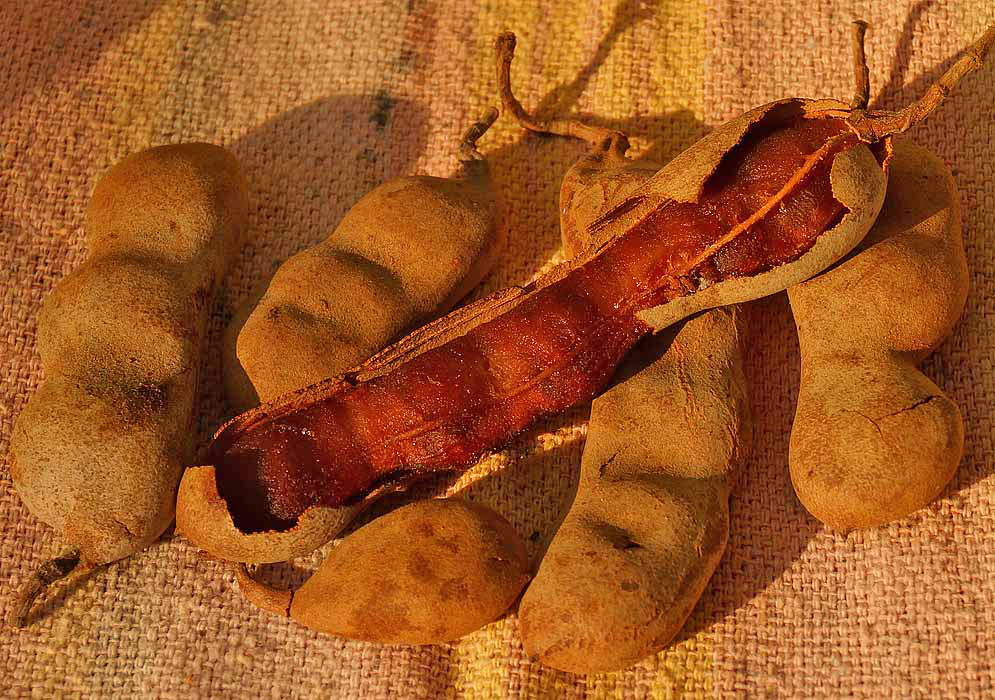
A tropical tree indigenous to tropical Africa and has become naturalized in the tropics. This leguminous tree is part of a monotypic genus, meaning it is the only species within its genus. The tree is valued for its edible fruit, which contains a sweet and tangy pulp used worldwide in cooking and traditional medicine, and its wood is used in woodworking. The young leaves are consumed in South Indian and Filipino cuisines. Due to its various uses, tamarind is cultivated across tropical and subtropical zones globally. The tree blooms with inconspicuous flowers that are red and yellow, with pink buds that reveal five-petalled flowers streaked with orange or red when in bloom. The fruit is called tamarindo in Colombia where it usually sold as a pulp with sugar added in the supermarkets. The fruit pods are sold in the markets. The acidic pulp can be eaten fresh or mixed with water for a juice. Photographed in the department of Atlantico, Colombia.


